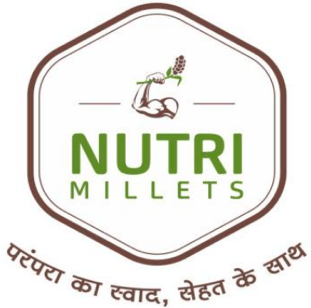Author: Bhagyashri Nilesh Raut
Ph.D. Scholar. UDCT,
BAMU, Chhatrapati Sambhaji
Nagar
Millets are small-seeded with different varieties such as pearl millet (Pennisetum glaucum), finger millet (Eleusine coracana), kodo millet (Paspalum setaceum), proso millet (Penicum miliaceum), foxtail millet (Setaria italic), little millet (Panicum sumatrense).
The world total production of millet grains at last count was 762712 metric tons and the top producer was India with an annual production of 334500 tons (43.85%).
Millet is one of the most important drought-resistant crops and the 6th cereal crop in terms of world agriculture production. Also, millet has resistance to pests and diseases, short growing season, and productivity under drought conditions, compared to major cereals. Therefore, millet grains are now receiving specific attention from these developing countries in terms of utilization as food.
Nutritional quality of food is a key element in maintaining human overall physical well-being because nutritional well-being is a sustainable force for health and development and maximization of human genetic potential. Therefore, for solving the problem of deep-rooted food insecurity and malnutrition, dietary quality should be taken into consideration. In addition to the cultivating advantages of millet, they were found to have high nutritive value and comparable to that of major cereals such as wheat and rice.
Millet is known as ragi and mandia in the Bastar region of Chhattisgarh and offers both nutritional and livelihood security for human beings and also feed security for diverse livestock populations in dryland regions of rural India.
Millet proteins are good sources of essential amino acids except lysine and threonine but are relatively high in methionine. Millets are also rich sources of phytochemicals and micronutrients. Thus, the presence of all the required nutrients in millets makes them suitable for large-scale utilization in the manufacture of food products such as baby foods, snack foods, and dietary food and, increasingly, more millet products have entered into the daily lives of people, including millet porridge, millet wine, and millet nutrition powder from both grain and flour form. Traditionally, millet grains are spread and dried in the sun for a period of one week and are stored inside the bags for future use or processing. The grains can be stored for 5 to 10 years. These processes improve the consumption, nutritional composition, and sensory attributes of Author: Bhagyashri Nilesh Raut Ph.D. Scholar. UDCT, BAMU, Chhatrapati Sambhaji Nagar food products. Various studies has been conducted and the researchers have tried to produced millets products like puffed, popped, flaked, extruded and roller dried products; fermented, malted and composite flours; weaning foods. Some of the recent studies are promising to produce popped and milled products.
Though millets have high nutrition than that of the cereals even then their utilization is not considerably flourished, their utilization can be increased by a way that directs to blend them with wheat flour. By this blending nutritional, physical, chemical as well as functional changes can be observed. Extruded products like macroni, spaghetti, etc. prepared form porridges made of millets which are extruded and cowpea (press dried) have higher nutrition with weaning foods acceptable properties. Pearl millet blended snacks are of low cost. Millet along with buck wheat and amaranth are used in place of maize and wheat flour for extruded snacks manufacturing. Products of bakery are becoming popular over the whole world because of their varying taste, less cost and profile textures along with packaging which is attractive and long shelf life which suit marketing.
The health benefits and nutrition provided by millets is equally to other major cereals like rice, wheat and maize but the technologies used to process can work out to improve its quality in terms of nutrition and other edible properties for house hold consumption. Increment and efficiency advancement in post-harvest technology and value addition technology has given opportunities to prepare and process enhanced products which are accepted by both urban and rural consumers. Even more high quality products of millet are required to enforce well-being and profit to all producers to farmers. So this topic of millets demands extensive research for improved millet food products that not only provide good health and other beneficial effect but also have good taste, extended shelf life and appealing colour and are also economically feasible for all grades of population.
References:
Soumya Rathore, Karunakar Singh, Vivek Kumar. Millet Grain Processing, Utilization and Its Role in Health Promotion: A Review. International Journal of Nutrition and Food Sciences. Vol. 5, No. 5, 2016, pp. 318-329.
Saleh, A. S., Zhang, Q., Chen, J., & Shen, Q. (2013). Millet grains: nutritional quality, processing, and potential health benefits. Comprehensive reviews in food science and food safety, 12(3), 281-295.
Rachie, K. O. (1975). The millets: importance, utilization and outlook.
Abdelgadir M, Abbas M, Jarvi A, Elbagir M, Eltom M, Berne C. 2004. ¨ Glycaemic and insulin responses of six traditional Sudanese carbohydrate-rich meals in subjects withType 2 diabetes mellitus. DiabetnMed 22:213–7.

